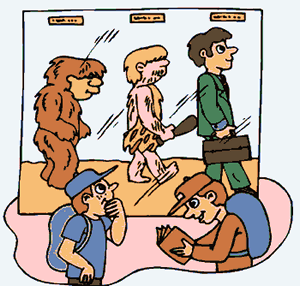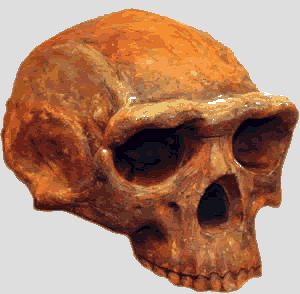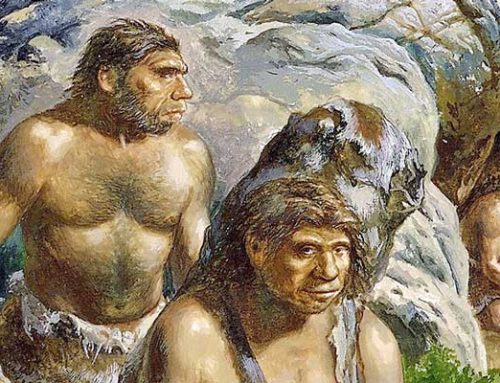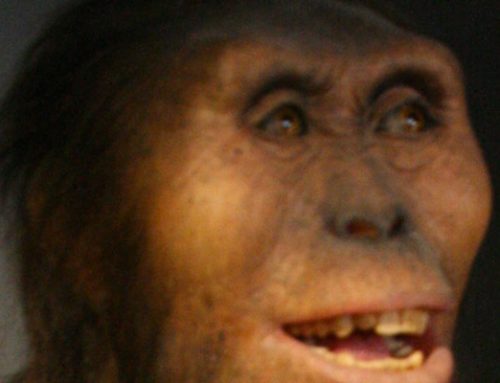The Theory of Evolution
Archaeologists have studied fossils and observed the close similarities between humans and apes. They concluded that we must have shared a common ancestor. Starting with the modern human skull, we can trace our family tree back millions of years. As we travel back in time, our ancestors looked less and less like us. They begin to resemble African apes with much smaller brains.
Our earliest ancestors were vegetarians. They did not eat meat. Scientists believe that humans began to eat meat when the climate where they lived began to change. There was less vegetation, and the hominids were not physically suited to compete with larger animals for the remaining plants. They became scavengers, eating the meat of dead animals. The protein in the meat made their brains larger and caused a greater hunger for meat.
About one million years ago, a hominid called homo erectus was more intelligent than the other animals, but there was a price to pay for having such a large brain. Getting a big homo erectus brain through a pelvis would be impossible, so natural section favored offspring whose brains continue to grow after birth. A newborn human is small enough to make the birth process possible, but their brains continue to grow after they are born. Other animals have almost fully developed brains and are active and independent shortly after they are born. Human infants, because of their brain growth, are almost as helpless as if they were still in the womb. This is because the human brain almost triples in size during the first year. The helplessness of infant children requires a family structure to support this long period of dependency.
Resources
Download this lesson as Microsoft Word file or as an Adobe Acrobat file.
Listen as Mr. Dowling reads this lesson.
Mr. Donn has an excellent website that includes a section on Prehistory.


The fossil remains indicate that homo erectus had a larger brain than previous hominids.




